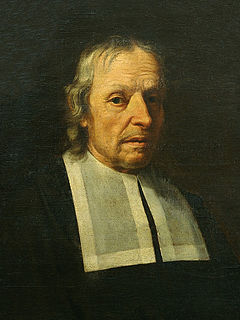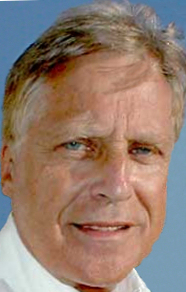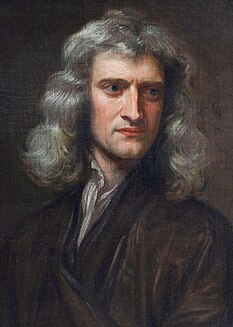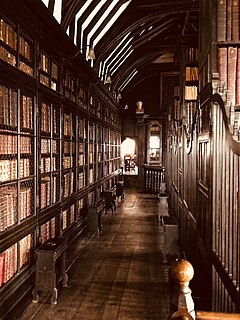
The cell is the basic structural, functional, and biological unit of all known living organisms. A cell is the smallest unit of life. Cells are often called the "building blocks of life". The study of cells is called cell biology or cellular biology.

Cell biology is a branch of biology that studies the structure and function of the cell, which is the basic unit of life. Cell biology is concerned with the physiological properties, metabolic processes, signaling pathways, life cycle, chemical composition and interactions of the cell with their environment. This is done both on a microscopic and molecular level as it encompasses prokaryotic cells and eukaryotic cells. Knowing the components of cells and how cells work is fundamental to all biological sciences; it is also essential for research in bio-medical fields such as cancer, and other diseases. Research in cell biology is closely related to genetics, biochemistry, molecular biology, immunology and cytochemistry.

Marcello Malpighi was an Italian biologist and physician, who is referred to as the "Founder of microscopical anatomy, histology & Father of physiology and embryology". Malpighi's name is born by several physiological features related to the biological excretory system, such as the Malpighian corpuscles and Malpighian pyramids of the kidneys and the Malpighian tubule system of insects. The splenic lymphoid nodules are often called the "Malpighian bodies of the spleen" or Malpighian corpuscles. The botanical family Malpighiaceae is also named after him. He was the first person to see capillaries in animals, and he discovered the link between arteries and veins that had eluded William Harvey. Malpighi was one of the earliest people to observe red blood cells under a microscope, after Jan Swammerdam. His treatise De polypo cordis (1666) was important for understanding blood composition, as well as how blood clots. In it, Malpighi described how the form of a blood clot differed in the right against the left sides of the heart.

Timeline of microscope technology

In biology, cell theory is the historic scientific theory, now universally accepted, that living organisms are made up of cells, that they are the basic structural/organizational unit of all organisms, and that all cells come from pre-existing cells. Cells are the basic unit of structure in all organisms and also the basic unit of reproduction. With continual improvements made to microscopes over time, magnification technology advanced enough to discover cells in the 17th century. This discovery is largely attributed to Robert Hooke, and began the scientific study of cells, also known as cell biology. Over a century later, many debates about cells began amongst scientists. Most of these debates involved the nature of cellular regeneration, and the idea of cells as a fundamental unit of life. Cell theory was eventually formulated in 1839. This is usually credited to Matthias Schleiden and Theodor Schwann. However, many other scientists like Rudolf Virchow contributed to the theory. It was an important step in the movement away from spontaneous generation.

Book collecting is the collecting of books, including seeking, locating, acquiring, organizing, cataloging, displaying, storing, and maintaining whatever books are of interest to a given collector. The love of books is bibliophilia, and someone who loves to read, admire, and collect books is called a bibliophile.

Micrographia: or Some Physiological Descriptions of Minute Bodies Made by Magnifying Glasses. With Observations and Inquiries Thereupon. is a historically significant book by Robert Hooke about his observations through various lenses. It is particularly notable for being the first book to illustrate insects, plants etc. as seen through microscopes. Published in January 1665, the first major publication of the Royal Society, it became the first scientific best-seller, inspiring a wide public interest in the new science of microscopy. It is also notable for coining the biological term cell.

A micrograph or photomicrograph is a photograph or digital image taken through a microscope or similar device to show a magnified image of an object. This is opposed to a macrograph or photomacrograph, an image which is also taken on a microscope but is only slightly magnified, usually less than 10 times. Micrography is the practice or art of using microscopes to make photographs.
Invertebrate zoology is the subdiscipline of zoology that consists of the study of invertebrates, animals without a backbone

Project MUSE, a non-profit collaboration between libraries and publishers, is an online database of peer-reviewed academic journals and electronic books. Project MUSE provides access to digital humanities and social science content from over 250 university presses and scholarly societies around the world. It is an aggregator of digital versions of academic journals and operates as a third-party acquisition service like EBSCO, Elsevier, JSTOR, OverDrive, and ProQuest.

Brian J. Ford FLS HonFRMS is an independent research biologist, author, and lecturer, who publishes on scientific issues for the general public. He has also been a television personality for more than 40 years.

Adobe Digital Editions is an ebook reader software program from Adobe Systems, built initially using Adobe Flash. It is used for acquiring, managing, and reading eBooks, digital newspapers, and other digital publications. The software supports PDF, XHTML and Flash-based content. It implements a proprietary scheme of Digital Rights Management ("DRM") which, since the version 1.5 release in May 2008, allows document sharing among multiple devices and user authentication via an Adobe ID. ADE is a successor to Adobe eBook Reader.

The Australian National University Library is part of the Australian National University in Canberra, one of the world's major research universities.

Microbiology is the study of microorganisms, those being unicellular, multicellular, or acellular. Microbiology encompasses numerous sub-disciplines including virology, parasitology, mycology and bacteriology.
A condenser is an optical lens which renders a divergent beam from a point source into a parallel or converging beam to illuminate an object.

The Dolph Briscoe Jr. Library is the central library of the University of Texas Health Science Center at San Antonio library system. It is located in South Texas Medical Center in San Antonio, Texas, USA.

The University of Adelaide Press is the book publishing arm of The University of Adelaide. It publishes peer-reviewed scholarship in print and open access ebooks. It is one of the few book publishers in the world to offer new titles in a free open access version on release.




















